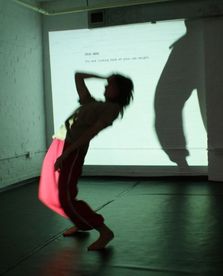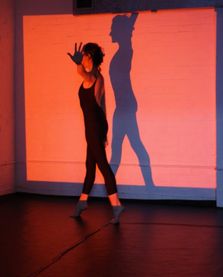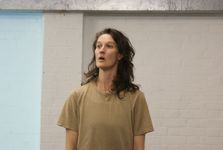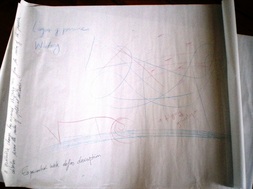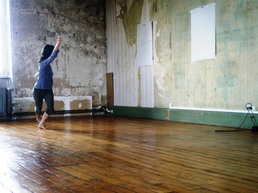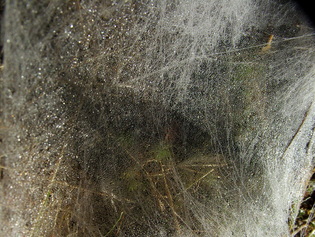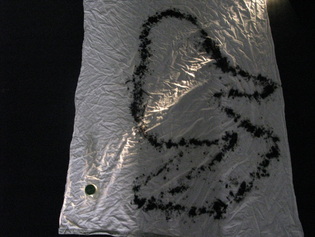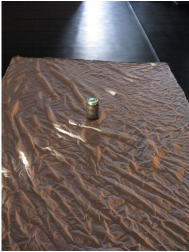Collaboration in Crisis? A mixed-practice doctoral research into collaborative practices in contemporary performance-making
Proposal
This work is premised on the notion that the idea of collaboration in the arts has recently become a crucial component of the creative process and cultural policy, but that the implications of this development have been the subject of comparatively limited attention in published academic writing. Located principally as an idea within the narrative of modernism and postmodernism, an idealised collaboration has been recurrently co-identified with radical artistic gestures challenging dominant modes of socio-political structures. Collaboration has been presented as a process which can enable artists to expand their fields of possibilities and resources (Banes, 1983; Green, 2001; Papastergiadis, 2008; Ellegood, 2010). However, the practice of collaboration occupies a different position within the arts, whether we refer to visual or the performing arts. I will argue that performative art forms have an inherent collaborative aspect, yet little emphasis has been put on problematising the influence of collaboration within the discipline.From another perspective, the trend in the university in the nineteen seventies to textualise performance practices, influenced by postmodern philosophies, led to a 'reading' ofperformance as a matter of visual and communicative culture. This resulted, one might argue, in a lack of critical interrogation of the collaborative process for performance production as such (McKenzie, 2001; Goldberg, 2004; Melrose, 2006). This is of particular significance as art practitioners have increasingly focused on creating hybrid forms which blur the borders between visual and performing arts, contributing to the emergence of live art and inter-disciplinary strategies. If we are then, living in what has been popularly described as 'the age of blockbuster collaboration' (Barnett, 2009), this suggests a pressing need to reassess what underlies the notion of contemporary collaboration.
The investigation is proposed as an attempt to follow a philosophical approach to performance making process by which I mean an exploration – through performance practice – of issues of collaboration in performance including technology, audience and questions regarding aesthetic and ontological practices. I will aim to explore how this philosophical undertaking works in relationship to audiences. This inquiry is linked to a broader set of questions of relevance to this study:
1. Considering the complex nexus of institutional criteria and evaluative mechanisms that are in place, what are the parameters which define the ethos of collaborating artists?
2. How as artists do we make sense of each other?
3. How, while using an economy of production based on senses and affects, can we claim to participate in or contribute to the knowledge economy?
4. Following from the above, can contemporary artists offer viable models for experimentation or resistance (to dominant codes and values?
While the investigation will be developed around a mixed-mode disciplinary practice, using several ‘languages’ – or systems – of production (including image, sound, body and text), the aim will be to produce reflective strategies to approach collaborative practices, by combining evidence of my practical work with critical written analysis: each of these practices is informed by the other and both contain the element of the thesis I am investigating.
The investigation is proposed as an attempt to follow a philosophical approach to performance making process by which I mean an exploration – through performance practice – of issues of collaboration in performance including technology, audience and questions regarding aesthetic and ontological practices. I will aim to explore how this philosophical undertaking works in relationship to audiences. This inquiry is linked to a broader set of questions of relevance to this study:
1. Considering the complex nexus of institutional criteria and evaluative mechanisms that are in place, what are the parameters which define the ethos of collaborating artists?
2. How as artists do we make sense of each other?
3. How, while using an economy of production based on senses and affects, can we claim to participate in or contribute to the knowledge economy?
4. Following from the above, can contemporary artists offer viable models for experimentation or resistance (to dominant codes and values?
While the investigation will be developed around a mixed-mode disciplinary practice, using several ‘languages’ – or systems – of production (including image, sound, body and text), the aim will be to produce reflective strategies to approach collaborative practices, by combining evidence of my practical work with critical written analysis: each of these practices is informed by the other and both contain the element of the thesis I am investigating.
Practical Projects / Performances
23 February 2012
Tout fait’: Bergson, time, and choreographic being-made
This mixed mode presentation, incorporating performative elements, will explore the relationship between Bergsonian thought and the readymade – or tout fait – with a focus on the impact of technology on contemporary perceptions of time. The implications of such impacts for collaborative choreographic practices will be considered.Performance - Lecture at 'Re-staging the Readymade' Panel.
College of Art Association, Annual Conference, Los Angeles, California
http://conference.collegeart.org/2012/
Siobhan Davies Studio, London - Saturday 28th January 2012 -
Rhythmic Trialogue: A collaboration with Florence Peake and JJ Wheeler
This performance is the work in
progress of an exploration on rhythm as ordered variation of changes. It hinges
around two relative principles of improvisational compositions:tension/release
and anticipation/dissociation. While the presentation at Siobhan Davies Studio
plays around the unique set up of the space it also seeks to rehearse the
proposition of a navigation between processes of temporal presence
and representation Part of a wider investigation into collaborative practices
and choreography, the performance seeks to illuminate some of the complex
spatio- temporal relationships in operation in a collaborative
structure.
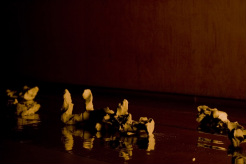
Photos: Dafne Louzioti
Siobhan Davies Studio - Saturday 28th January 2012 -
Rhythmic Trialogue -
Noyale Colin, Florence Peake & JJ Wheeler
At the edge of perception, rhythm marks time. It cuts, flows or disrupts – and creates relationship. Using improvisational structures, two dance artists and a musician create a web of relations with each other, with spectators and with time and space.
Chisenhale Dance Space Homemade Festival - 26th &27th November
Solo: They tried to stand [I am still falling]
Choreographic Lab At Chisenhale Dance Space - Autumn - Winter 2011
Deptford X Festival 2011
The Archive - Open Studio
October 1st 2011
Solo: They tried to stand [I am still falling]
PAF - St Erme France - Residency - August 2011
Collaboration with Rebecca Woodford-Smith
PAF -Residency from noyale colin on Vimeo.
Generating the Impossible - A Potlatch For Research-Creation initiated by Erin Manning and Brian Massumi- Sense Lab - Montreal
In the forest: July 3-7 2011, In the city: July 8-10 2011
http://senselab.ca/?page_id=83
Choreographic presence through time: a performative assessment of the legacy of the Judson Dance Theatre Group
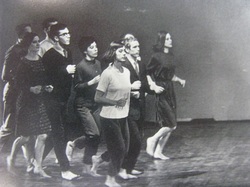
June 2011 - Colloque international Universite de Nice Sophia-Antipolis: ''La transmission du geste en question: processus, experience, figure''
This performance is not a reconstruction. Indeed, a recent trend towards choreographic re-constructions perhaps reveals an anxiety about the relationship between dance and history. The strategic use of stillness and slow motion by choreographers including Gerome Bel or Yvanna Muller also indicates a concern around the place and meaning of ‘time’ in live performance. For the anthoropologist Nadia Seremetakis, the practice of historical interrogation requires a performance of suspension that she calls a ‘still-act’ ‘against the flow of the present’. Stillness, she argues is ‘the moment of exit from historical dust’. The problem of disappearance exists in dance if we consider the body to exist only in a boxed present.
Henri Bergson proposed we think of time in terms of duration: ‘Le temps est advenir’. Drawing on such thought, Brian Massumi affirms that ‘it is not the present that moves from the past to the future. It is the future-past that continually moves through the present. He observes that ‘a body present is in a dissolve [...] a thing cannot be understood without reference to the non-present dimension it compresses and...expresses in continuity’. This performance is in dialogue with these ideas, which are explored here through an assessment of the legacy of the Judson Church Theatre Group - the avant-garde New York-based collective - widely credited with the creation of postmodern dance.
This performance is not a reconstruction. Indeed, a recent trend towards choreographic re-constructions perhaps reveals an anxiety about the relationship between dance and history. The strategic use of stillness and slow motion by choreographers including Gerome Bel or Yvanna Muller also indicates a concern around the place and meaning of ‘time’ in live performance. For the anthoropologist Nadia Seremetakis, the practice of historical interrogation requires a performance of suspension that she calls a ‘still-act’ ‘against the flow of the present’. Stillness, she argues is ‘the moment of exit from historical dust’. The problem of disappearance exists in dance if we consider the body to exist only in a boxed present.
Henri Bergson proposed we think of time in terms of duration: ‘Le temps est advenir’. Drawing on such thought, Brian Massumi affirms that ‘it is not the present that moves from the past to the future. It is the future-past that continually moves through the present. He observes that ‘a body present is in a dissolve [...] a thing cannot be understood without reference to the non-present dimension it compresses and...expresses in continuity’. This performance is in dialogue with these ideas, which are explored here through an assessment of the legacy of the Judson Church Theatre Group - the avant-garde New York-based collective - widely credited with the creation of postmodern dance.
A performance response to the theoretical notion of perception - Middlesex University March 2011
COLLABORATIVE PRACTICES IN CHOREOGRAPHY
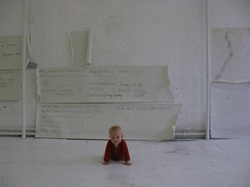
Research Statement - doctoral inquiry’s practical elements - July 2010
This mixed practice enquiry adopts a philosophical approach to performance, allowing for consideration the ‘intuitive mechanisms’ embedded in artists’ skills. My research also examines the recent history of collaborative choreographic practice (from the Judson Dance Theatre onwards). The practical element of this inquiry will consider in practice the ways in which my own practice has been influenced by the developments of compositions in dance and framed within the paradigm shift between modernity and post-modernity in art.
In the first stage of the project I will collaborate in the devising of a choreographic solo. I will be inviting arts practitioners to observe my process and reflect on the notion of inner collaboration within the self or what I am proposing to call the polyphonic layering of hidden voices in the creative process. The focus of the creative process will be to make manifest the complex relationship between the self-gaze, the inner voices and the intuitive sensing in operation at the moment of rehearsal. Through being observed I am aiming at producing a subtle collaborative language of access into a somatic practice. Incorporating an analysis and discussion of the initial solo, this first stage of the project will also be presented in a public performance/presentation, combining writing and performance, which will contribute to the assessment of the progression of the project from MPhil to PhD. This self-reflective element will allow me to theorise (via practice) ideas of different modes of collaboration in the creative process, including the collaboration with the ‘self/selves’ (or how decision-making in performance involves negotiating different elements of our own internal processes).
This mixed practice enquiry adopts a philosophical approach to performance, allowing for consideration the ‘intuitive mechanisms’ embedded in artists’ skills. My research also examines the recent history of collaborative choreographic practice (from the Judson Dance Theatre onwards). The practical element of this inquiry will consider in practice the ways in which my own practice has been influenced by the developments of compositions in dance and framed within the paradigm shift between modernity and post-modernity in art.
In the first stage of the project I will collaborate in the devising of a choreographic solo. I will be inviting arts practitioners to observe my process and reflect on the notion of inner collaboration within the self or what I am proposing to call the polyphonic layering of hidden voices in the creative process. The focus of the creative process will be to make manifest the complex relationship between the self-gaze, the inner voices and the intuitive sensing in operation at the moment of rehearsal. Through being observed I am aiming at producing a subtle collaborative language of access into a somatic practice. Incorporating an analysis and discussion of the initial solo, this first stage of the project will also be presented in a public performance/presentation, combining writing and performance, which will contribute to the assessment of the progression of the project from MPhil to PhD. This self-reflective element will allow me to theorise (via practice) ideas of different modes of collaboration in the creative process, including the collaboration with the ‘self/selves’ (or how decision-making in performance involves negotiating different elements of our own internal processes).
This is Not Nirvana - Performance Installation - Greenwich Footpath Tunnel - 2008-2009
A public art project in the form of a performative installation. The work explores mythological notions of the underworld, the spaces that exist beneath cities and the hidden properties that these spaces inhabit in our imagination. The work incorporates scenographic sound alongside visceral visual movement based imagery. Produced by Palimpsest, an artistic collaboration between Noyale Colin, Bruno Humberto, Roberta Jean, Jenny Norris, Tristan Shorr and Yara Burkhalter.
All images by Helena Suarez http://flickr.com/photos/ladelentes
The Tunnel Project at Shunt
A Palimpsest residency 28- 31 of January 2009
http://palimpsest.weebly.com/index.html
